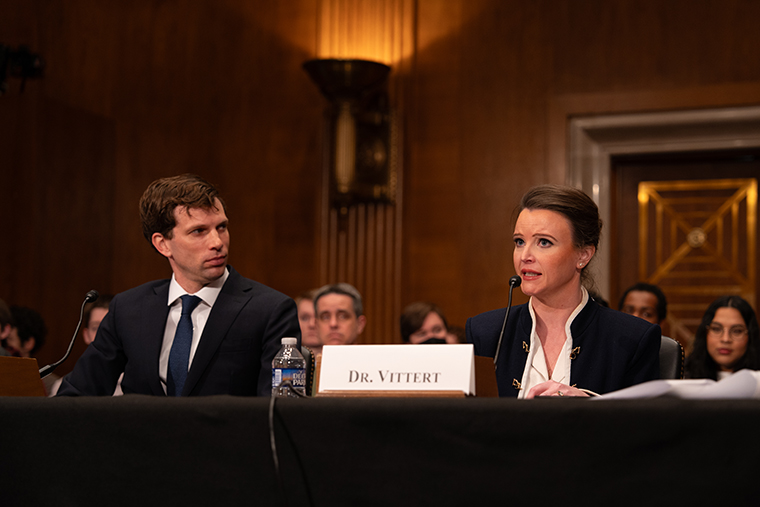The studies that are frequently touted as proof of concept for a shortened work week are riddled with statistical flaws, according to Liberty Vittert, professor of practice of data science at Olin Business School at Washington University in St. Louis.
Vittert shared her findings in testimony before the U.S. Senate Committee on Heath, Education, Labor and Pensions on March 13.
“The idea of a 32-hour work week has gained a significant following as a solution to modern workplace challenges, including burnout, stress and work-life balance,” Vittert told the committee. “Proponents often point to statistical studies and pilot programs that suggest shorter work hours can lead to increased productivity and improved employee well-being.
“The argument for the 32-hour week is much more tendentious, making broad claims based on weak and flawed data sets. A closer look at some of the most popularly cited studies reveals significant flaws and limitations that call into question their reliability and validity.”
For example, a study in Iceland that is widely cited as a measure of the success of the shortened work week fails to mention that the Icelandic government had to expend almost $30 million extra to hire more health care workers because of the experiment, Vittert said. This is also the case with a study in Spain where companies that participated in the pilot were also eligible for a multi-million dollar government fund to help subsidize, she added.
The Iceland study, like many others, also had several methodological challenges, Vittert said.
For instance, the study relied on self-reported data — meaning the employees who are directly affected by the study are reporting on themselves — which is susceptible to severe biases. Additionally, a lack of randomization in assigning workers who choose to participate in the pilot program versus the control group can cause “serious statistical selection bias and confounding variables,” Vittert said.
“Many of the companies that have chosen to participate are small and trying to grow by enticing new workers or can reduce hours by removing extraneous meetings, coffee breaks, etc. — a point made by the study conductors themselves,” Vittert said. “But that’s not always the case. Given the fact that 75% of the workforce in the United States works with their hands, there are no extraneous meetings to cut out.”
Even the definition of productivity and success has varied by study. Some define it as sales per agent, others as company revenue or, more broadly, country gross domestic product (GDP). In most studies, productivity and success were simply self-reported by the employee, Vittert said.
Importantly, no study has documented long-term productivity increases because of shortened work weeks, Vittert said. But multiple studies have documented the long-term negative impact of shortened work weeks, particularly on a country’s GDP.
In her testimony, Vittert told the committee that there are many overlooked studies that show the true detriment to both the workers and the economy of the country. In particular, she said the concept that this reduction in hours will automatically increase happiness and decrease stress long-term is statistically flawed. For evidence, Vittert pointed to France, where the government mandated the reduction of the standard work week from 39 hours to 35 hours.
“There was no evidence that this increased workers’ happiness,” Vittert said. “In fact, in some cases, it decreased workers’ happiness because of the effect the change had on companies’ hiring practices. As a result of the mandate, many companies needed to hire additional part-time, cheaper workers.”
Vittert told the committee that an effort to mandate shorter work weeks in the U.S. would have uneven effects on workers.
“Given the types of companies that are potentially capable of cutting their work week, we could see a divide of the rich getting richer, or working less time, and the poor needing to take on part-time jobs,” Vittert said. “Given our largely aging population, we also potentially disadvantage older workers who cannot necessarily physically do the same amount of work in a shorter time.
“Further, given the potential need for companies to hire part-time workers to ensure that productivity does not decrease, part-time unemployment could potentially increase significantly. These jobs are usually associated with lower pay and lack of benefits. For workers who might need to work two jobs to earn equitable salaries, stress and unhappiness will surely increase.”



